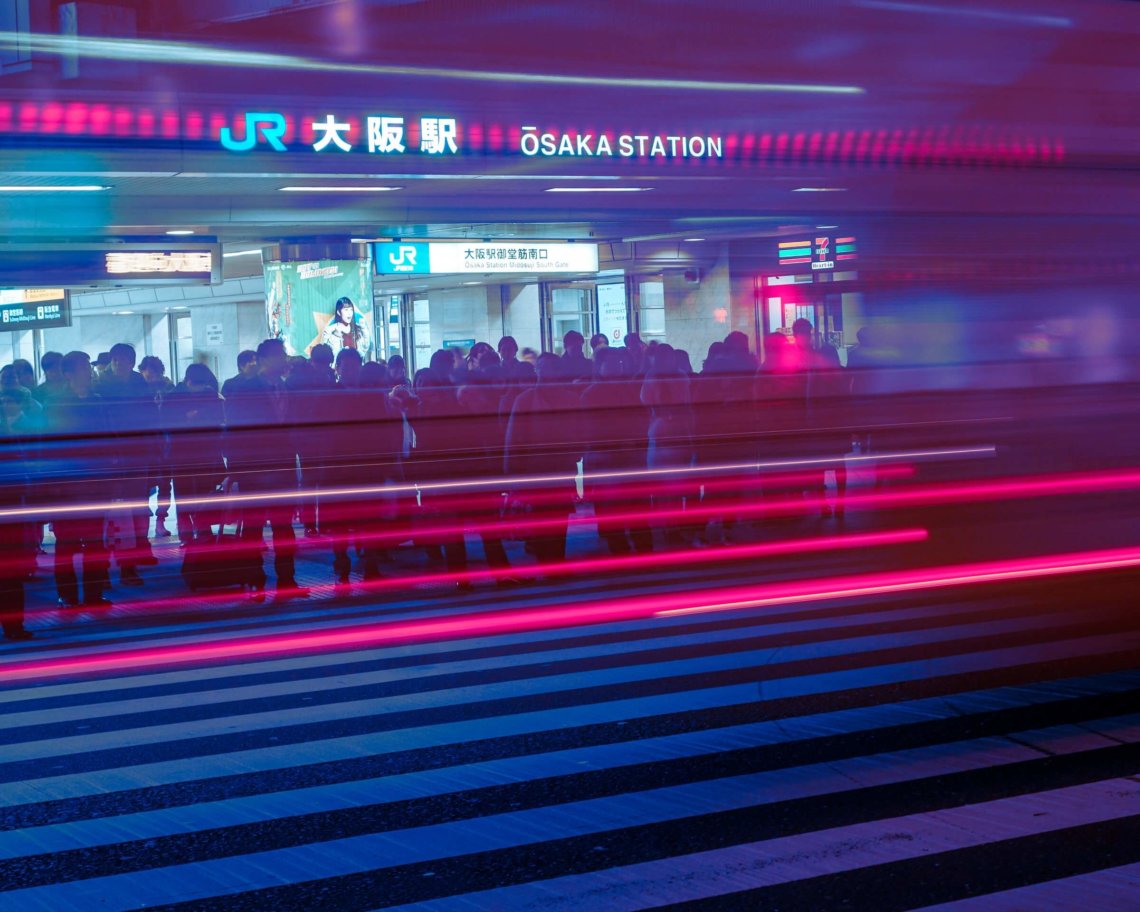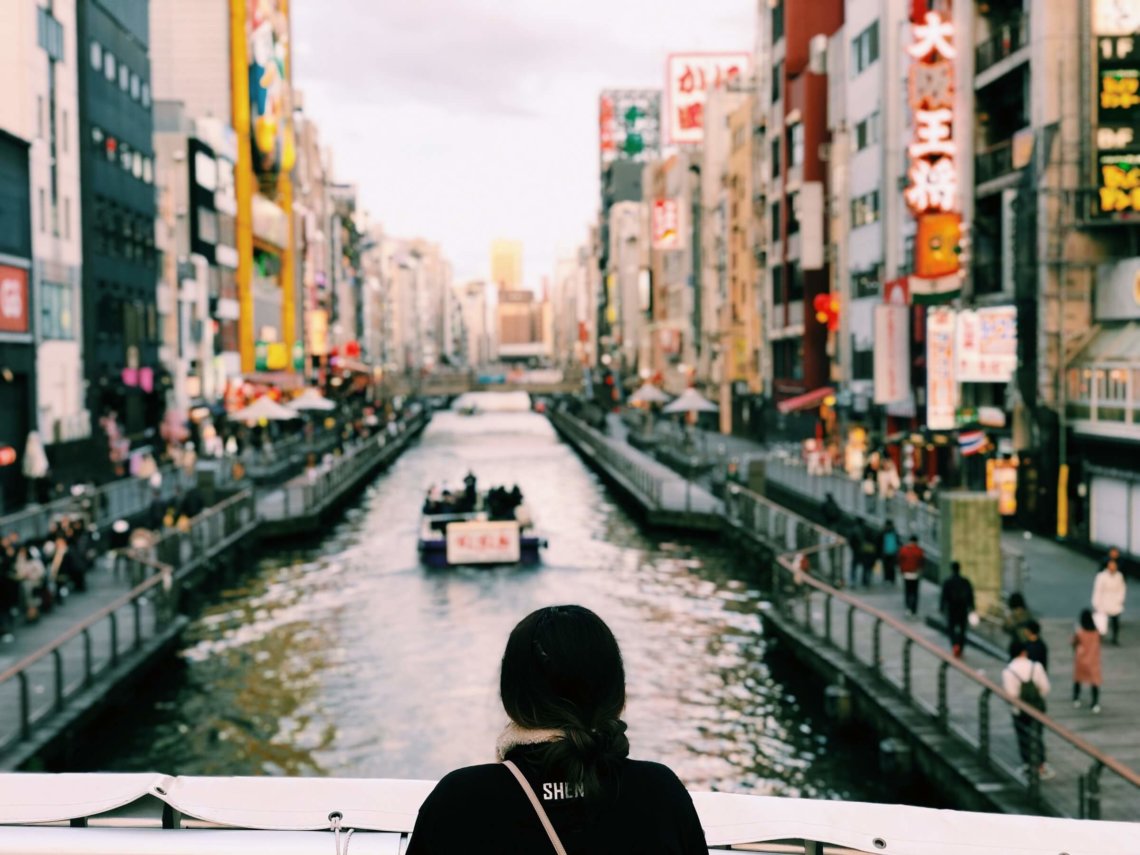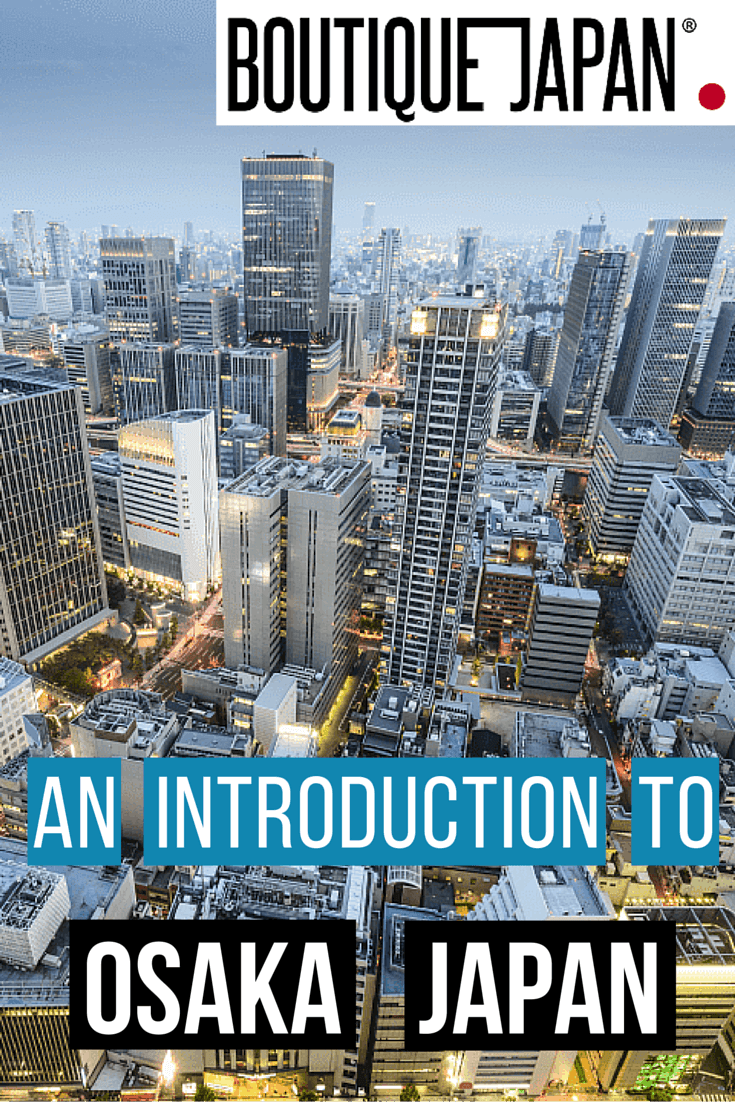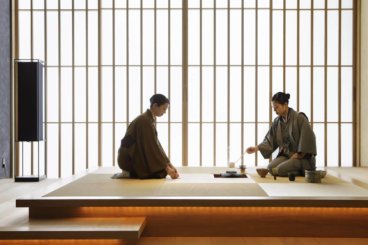The exuberant energy of Osaka, Japan, is a striking contrast to the traditional culture of Kyoto, and the two Kansai neighbors could not be more different from one another — despite being just a half-hour apart!
The lively metropolis of Osaka, Kansai’s largest city, is sometimes overlooked by first-time visitors to Japan (usually in favor of Kyoto, which always appears on lists of Japan’s best destinations). Yet it is a perennial favorite of Japan connoisseurs and repeat visitors, especially among travelers who love Japanese food.
Osaka is best known for its amazing casual food and outgoing locals. It’s arguably Japan’s street food capital, and most famous for snacks including takoyaki and okonomiyaki. Osaka is also renowned for its fun, extroverted people who make eating and drinking in the city an unforgettable experience.
Originally written in 2015, this post was updated and republished on June 17, 2022.

When to Visit Osaka
Like most of central Japan, Osaka is a year-round destination, though the weather varies significantly depending on the season.
Generally speaking, temperatures in Osaka (and Kansai, in general) tend to be most comfortable and pleasant in the spring and fall. Because these are very popular times to visit, we suggest trying to avoid the busiest periods within these seasons (learn more in our comprehensive post, When Is the Best Time to Visit Japan?).
If you prefer to encounter fewer tourists — and don’t mind the cold or heat — consider traveling during a less crowded time of year.
As with elsewhere in Japan, winter can get quite cold (though Osaka is usually a little less frigid than nearby Kyoto). Summers are very hot and humid, though also fun and fascinating, especially if you time your visit with a local matsuri (festival).
Getting to Osaka
Getting to Osaka is extremely convenient.
Flying to Osaka, Japan
By air, Osaka is served by two airports: Kansai International Airport (KIX) and Osaka International Airport (ITM).
Osaka is very well connected with numerous international flights from around the world, as well as domestic flights from throughout Japan.
Taking the Bullet Train to to Osaka
From cities such as Tokyo, Hiroshima, Fukuoka, and Nagoya, the way to get to Osaka is typically by shinkansen (bullet train) to Shin-Osaka Station.
Read more about train travel in Japan.

Traveling from Kyoto to Osaka
Because of the short distance (just 27 miles, or 43 kilometers), some travelers may be tempted to drive or take a taxi from Kyoto to Osaka. But in great part due to traffic, going by rail is usually easier and faster.
It’s easy to travel from Kyoto to Osaka by rail, with several railway companies and routes offering service between the two cities.
Here is a simple overview of the best ways to travel between Kyoto and Osaka by train, though there is no single “best” option as it will depend in part on where in Kyoto you’re departing from, and where in Osaka you’d like to go.
For example, if you’re staying near Gion your best option may be via Keihan, whereas if you’re staying near Kyoto Station, JR is often most convenient.
- Japan Railways (JR) Special Rapid from Kyoto Station to Osaka Station (approx. 30 minutes). With relatively frequent departures, for many travelers, this commuter train is the simplest option.
- Hankyu Railways from Kyoto’s Kawaramachi Station to Osaka’s Umeda Station (approx. 40 minutes).
- Keihan Railways from Kyoto’s Gion-Shijo Station to Osaka’s Yodoyabashi Station (approx. 55 minutes). One fun aspect of this route is the option to upgrade to the Premium Car, which offers reserved seating and a more luxurious atmosphere. The tickets must be purchased at the station before boarding.
- Japan Railways (JR) Shinkansen from Kyoto Station to Shin-Osaka Station (approx. 15 minutes). Despite its speed (and the option of reserved seats), the bullet train is not always best, partly due to the mildly inconvenient departure and arrival locations in Kyoto.
Assuming you have Wi-Fi while you’re in Japan, the easiest way to determine your best route is to check Google Maps, Jorudan, or NaviTime. These apps can provide specific transit suggestions depending on your departure and arrival stations (both Osaka and Kyoto are large cities).

Osaka Culture: Food, Fun, and Nightlife
Osaka is arguably Japan’s street food capital (along with the food-obsessed city of Fukuoka), and within Japan the city is famous — some might say notorious! — for its unique and spirited culture.
The delicious, unpretentious cuisine is what draws many culinary travelers to Osaka. The city’s people are famous for their obsession with eating and drinking, which has given rise to the well-known local expression, kuidaore (“to eat oneself to ruin”).
Osaka has an eclectic culinary universe, with specialties ranging from casual favorites such as streetside takoyaki and okonomiyaki, to elegant establishments and Michelin-starred restaurants.
If you love food, read our in-depth guide on foods to eat in Osaka before your trip.
While Osaka is home to some of Japan’s top high-end restaurants, part of the fun here is eating and drinking alongside locals at boisterous hole-in-the-wall izakayas, tachinomi (standing bars), and hidden cocktail bars.
Along with its great food and energetic nightlife, Osaka is also home to some of Japan’s most fun-loving people. It’s no surprise that many of Japan’s most famous comedians are from Osaka, and the local baseball fans (of the Hanshin Tigers team) are among the most rabid and passionate in the country.
This energy is also on full display at the city’s many matsuri (festivals), the most famous of which is the annual Tenjin Matsuri, which takes place in late July. Along with the beautiful traditional dress and ceremonies, a festival like the Tenjin Matsuri is the ideal place to have fun alongside Osaka’s people as they eat and drink with abandon to celebrate the festivities.

What to Do in Osaka
Osaka tourist attractions such as Osaka Castle and Universal Studios Japan are a draw for many travelers, but if you’re like us, food comes first!
When including Osaka in a custom Japan itinerary, we tend to tell travelers that this portion of the trip will be less about sights, and more about the city’s people and cuisine. That being said, it is a cosmopolitan, multi-dimensional city with an array of offerings to enjoy.
Here are a few of the best things to see and do in Osaka:
Take a Private Osaka Food Tour
If you are an intrepid traveler, you can do your research, find some places you think look good (and seem untouristy), and have a great experience on your own. But there are some limits to this approach, especially if you don’t speak or read Japanese.
Some people are skeptical of tours, but there is no deeper way to experience Osaka’s rambunctious world of food and drink than with a culinary insider who can take you to places you simply would not get to experience without a local friend or guide.
If you book your Japan trip with us, we take care of this for you, including vetted guides (friends and experts in our tight-knit Japan network) along with as much free time as you’d like. If you book your trip independently, you should be able to find a good private guide if you take the time to do some quality research and vetting.
Explore the Trendy Neighborhoods of Horie, Shinsaibashi, and Amerika-mura
If you like to walk through charming neighborhoods, start in the uber-hip Horie district, which is full of unique shops, stylish boutiques, and some of the city’s best coffee shops.
Then venture into the colorful Amerika-mura neighborhood (Osaka’s answer to Harajuku), where you’ll find a mix of vintage shops, pancake cafes, and some of the city’s best people-watching.
End your stroll in the adjacent Shinsaibashi district, which is home to a long and lively shotengai shopping street, along with major brand shops and top-notch department stores.
Picnic in Osaka Castle Park
No offense to Osaka, but there are more interesting castles to explore (Himeji, Hikone, Matsumoto… the list goes on). To be fair, Osaka Castle is very beautiful, particularly from the outside. However, it is a reconstruction, and to put it mildly, the interior of the castle feels quite touristy.
So rather than entering (and experiencing likely disappointment), simply head to the beautiful park in which the lovely castle is located, and bring along a bento and some sake or local craft beer. For picnics in Japan, the best place to pick up quality supplies is usually at the depachika food hall of any good department store, but in a pinch, a conbini will also do.
Explore the Side Streets Around the Dotonbori
The neon-filled Dotonbori is perhaps Japan’s best-known (and gaudiest) culinary street, and for some travelers, it’s a must-see. If you don’t like touristy places, you won’t want to spend long here, but fortunately, the surrounding Namba district is full of worthwhile gems.
In the area’s gritty side streets, you’ll find cheap and cheerful local shops and stalls serving everything from takoyaki and okonomiyaki, to ramen, yakitori, and more.
Eat Your Way Through Tenma, Tsuruhashi, and Shin-Sekai
These are just three of Osaka’s countless neighborhoods offering outstanding food and drink.
Tenma is a lively maze of streets and alleys lined with a remarkable array of casual restaurants and drinking spots. The slightly less popular Fukushima district nearby is also worth exploring.
If you’d like a change from Japanese food, the neighborhood of Tsuruhashi is one of the best places in Japan to sample authentic Korean cuisine.
And if you’re the type of traveler who enjoys fried food and seedy old neighborhoods, head to the retro and rough-around-the-edges district of Shinsekai for another glimpse of Osaka, and some of the city’s best kushi-katsu.
Experience Osaka’s Aquarium and World-Class Theme Parks
It’s not all about food, and Osaka’s sights also include some of Japan’s best theme parks, along with the world-class Kaiyukan Aquarium, which is perennially popular with family travelers.
For fans of Harry Potter or Mario and Luigi, Universal Studios Japan’s Wizarding World of Harry Potter and Super Nintendo World are huge draws.

Where to Stay in Osaka
Osaka has some excellent accommodations, though not quite as much selection as Tokyo and Kyoto in terms of interesting boutique and luxury hotels.
Here are some of the best hotels in Osaka:
- The St. Regis Osaka: Perhaps the classic Osaka luxury hotel, The St. Regis Osaka has an elegant and convenient location in the upscale Midosuji district. While the immediate vicinity is quite quiet, you’re within walking distance of vibrant neighborhoods including Shinsaibashi, Horie, and, a little further south, Namba. Even if you’re not staying here, The St. Regis Bar is a fun spot for a classy cocktail.
- Conrad Osaka: Arguably Osaka’s top luxury hotel, the relatively new Conrad Osaka has bright, luxurious rooms and suites. With amazing views of the city’s glittering skyline, the Conrad’s location on the urban island of Nakanoshima offers convenient access to both north (Kita) and south (Minami) Osaka.
- Osaka Marriott Miyako Hotel: At the Osaka Marriott Miyako it’s all about the views. While its location in the Tennoji area is a bit too out of the way for most travelers, its sweeping city views are spectacular.
- Hotel Royal Classic Osaka: A very nice upper mid-range hotel, Hotel Royal Classic Osaka offers tasteful and comfortable accommodations in the lively Namba district. Uniquely, the hotel is housed in the city’s former Shin-Kabukiza Theater.
- Swissotel Nankai Osaka: A reliable and convenient mid-range hotel, Swissotel Nankai Osaka is located in the heart of Minami, atop Nankai Namba Station, which offers easy access to all of Osaka, along with the Buddhist mountain top community of Mount Koya.
Other Osaka hotels worth mentioning include the high-end InterContinental Osaka and The Ritz-Carlton Osaka, and the budget-friendly Hotel The Flag Shinsaibashi.

Bonus Interview: Sam Crofts of Cycle Osaka
For some bonus perspective, we invited our friend Sam Crofts — an Osaka resident and travel industry entrepreneur — to tell us more about what makes his adopted home such a special place.
Together with his wife, an Osaka native, Sam has started several companies designed to give travelers immersive experiences, including their first tour company, Cycle Osaka.
What are some specific things that you love most about Osaka?
First is the diversity. The biggest Koreatown in the country is here; the tallest building in the country is here; the oldest temple in the country is here. There’s just so much in such a concentrated area.
Second is how real it is. What I mean is, say you go to Shitenno-ji Temple, you’ve got real monks and priests walking around. In so many parts of Japan the famous temples are swamped by tourists and school groups. I love that most parts of Osaka are non-touristy places where real locals hang out, and you really feel it when you’ve been here for even a short time.
Not including your tours, what would be the perfect day in Osaka?
For a perfect day in Osaka I’d try to get a bit of everything in, so I’d start at the Sumiyoshi Shrine in the south of the city. It’s connected by one of the few remaining trams in Japan, because in the 1920s all the trams disappeared and the subway emerged, but there’s one tram left in Osaka that connects this shrine to an area called Tennoji.
I’d go to Tennoji for lunch and eat some kushikatsu, which is deep-fried pork and vegetables on a stick, and I’d stop in at Tower Knives, which is a knife exporter, and I’d play with some of the hand-forged knives.
From there, I’d probably go up to Osaka-jo because you can’t to not go Osaka Castle, and I’d go for a run or a bike ride. And from there, probably head to Umeda for sushi.
I’d end the day down in Namba. It’s a very concentrated area of neon bars and restaurants that rivals anywhere in Tokyo, in my opinion, and there are lots of colorful characters. Finally, depending on your budget, retire to The St. Regis or wherever you’re staying.

Imagine it’s your last day in Osaka. You have time for one last meal. Where do you go?
That is literally an impossible question.
All right, I’m going to say – for the atmosphere – near my neighborhood, an area called Fukushima, there’s a yakiniku restaurant underneath the train tracks. I think I’d have to go there. It’s really old. There are no posh tables, everyone sits on beer crates turned upside-down, and the atmosphere’s electric. It’s smoky – it smells really strongly of cigarette smoke and beer and cooking beef – and I think I’d like that to be my lasting memory of Osaka.
Perfect. So changing gears, what are your favorite times of year to be here?
The fall and the spring are just ridiculously beautiful. Osaka has this reputation, in Japan, as this completely industrial working-class kind of city, but that couldn’t be further from the truth.
In spring, in Sakuranomiya, the river bends round and it’s covered with cherry blossoms. And the same in autumn: you’ll find parks with beautiful foliage and also perfect weather for cycling or walking around.
Just make sure to plan ahead!

Aside from famous touristy spots like Universal Studios, the Kaiyukan Aquarium, or even Osaka Castle, do you have any tips for families with kids?
Yes, actually there’s a place called Kids Plaza Osaka. It’s just this Aladdin’s cave of crazy activities for kids, with ball pools and things to climb and jump off and have a wildly fun time and get tired, while your parents sit there and watch. I think that’s the place to go.
So tell us about your company, Cycle Osaka, for somebody who doesn’t know anything about it.
Cycle Osaka is our way of bringing together the two things that we love the most: the city of Osaka and biking.
Basically, it’s a flat town with a lot to see and do, but we felt that — in contrast to say Kyoto or Tokyo — there’s not really that infrastructure for English-speaking tourists.
One of the realities of travel in Japan is that many people visit on the way to somewhere else. For instance, people are going from Tokyo to Hiroshima, and they’ll stop in Osaka for maybe one night.
And I’m really worried that people are going to come here and miss out on all this amazing stuff, just underneath the surface, because they don’t have the access and the city doesn’t really promote its hidden gems to tourists, especially English-speaking tourists.
So we put it all together and made Cycle Osaka, and now every day we go out and bike with four or five people, and check out some little neighborhoods that no one’s heard of, and then we check out the big sites, and we just have a really good day and eat some good food.
Perfect.
It’s really quite simple.
Thanks so much for your time, Sam!
You can learn more about Sam’s outings at Cycle Osaka.
We hope this article has given you a better understanding of why we love Osaka, and why it’s worth considering as part of your Japan trip!



